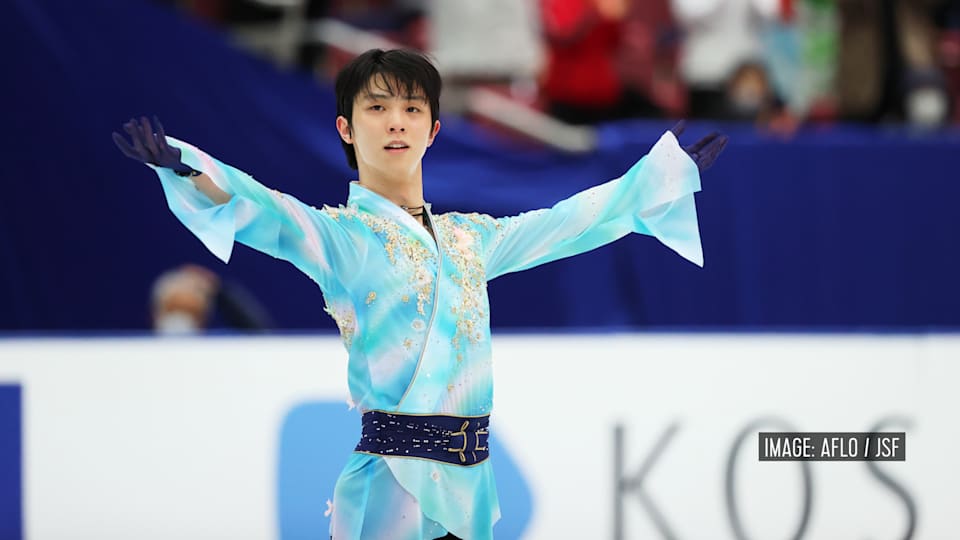Hanyu Yuzuru and how 2011 earthquake catastrophe shaped his career
When the Great East Japan Earthquake hit in March 2011, the double Olympic champ was still a 16-year-old and training in the affected region – and the disaster had a profound impact

Hanyu Yuzuru remembers everything clearly.
That day exactly 10 years ago when his world changed.
The Great East Japan Earthquake – a magnitude 9.0 tremor – struck at 2:46 pm local time 11 March 2011, while the 16-year-old Hanyu was training at his local ice rink in Sendai.
It generated a tsunami, which led to a nuclear meltdown at the Fukushima Daiichi Power Plant. Nearly 16,000 people died.
Since that fateful day, Hanyu – who has gone from having just finished his first senior season to a double Olympic figure skating champion – has never stopped giving back to his home region and the victims of the disaster.
Hanyu's evacuation
It was three weeks after the end of the 2010/11 season, which saw Hanyu make his senior debut and clinch an unexpected silver medal at the Four Continents Championships.
Hanyu was on the ice at the Sendai Ice Rink when the earthquake hit.
The frightened teenager, with the ice cracking under his feet, ran out of the building immediately without even stopping to put his skate guards on, damaging his blades.
"Even now, when I close my eyes, I remember a lot of things," he would write in his first autobiography Blue Flames, which was published the following year.
"The feeling of the ice shaking, the shaking of the ground being pushed up, how terrible it was that my legs were shaking from the earthquake."
While the rink did not collapse and the tsunami did not reach the area, the water pipes under the ice burst, flooding the building and rendering it unusable.
Meanwhile, Hanyu's parents' house sustained some damage in the shock, meaning the young skater and his family had to spend time in a temporary evacuation centre set up in a gymnasium.
"At the centre, a lot of people helped us so much, and therefore I would like to do anything for them – what I can do is just skating," he said a month after the tragedy.
Support from Arakawa
However, skating wasn't going to be easy in the aftermath of the devastation left behind by the quake and tsunami.
With the Sendai Ice Rink out of commission – it would not re-open until July – a new training base had to be found.
Hanyu ended up moving to Hachinohe City at first – three hours away by car; later his skating club would move to Yokohama, near Tokyo, more than 300 km away from Sendai and far from the failing nuclear power stations.
While he considered his future in the sport, Torino 2006 ladies' singles champion Arakawa Shizuka – who had studied at the same high school that Hanyu was attending – encouraged him to keep skating.
"After the earthquake and tsunami I wasn't able to skate and I really seriously thought about quitting because I just had my hands full making a living, to stay alive. So many people helped me out and now I'm here today," he said after winning his first Olympic title at Sochi 2014.
"Shizuka was skating with me and made a donation to me and that's why I'm here."
Given renewed vigour and hope, he skated in ice shows in the weeks that followed – partially as training. Over the following months, he skated in some 60 exhibitions.
Arakawa's support, in turn, has motivated him to continuously pay that back to the affected community.
"Make every day count"
Even now, 10 years after the catastrophe, Hanyu continues to help the affected area as well as his ice rink.
Royalties and a part of the proceeds from two autobiographies, Blue Flames (2012) and Blue Flames II (2016), go towards keeping the Sendai Ice Rink maintained.
Just this year, he donated another 2.11 million Japanese yen (nearly U.S. $20,000) to the ice rink, and has given some 31 million yen (around U.S. $286,000) in the last decade.
He has also taken part in various charity television shows and ice shows to raise funds for the victims, and in 2015 was selected as the Japanese Red Cross spokesman for recovery efforts.
At PyeongChang 2018, after successfully defending his Olympic title, he skated his exhibition gala routine as a tribute to the victims of the disaster.
There is little doubt that the disaster is still a key part of Hanyu as he seeks a third straight Olympic crown in 2022, which if achieved would make him the first man in nearly a century to do so.
"I can still vividly see everything when the rink was damaged," Hanyu wrote in Blue Flames.
"I want to make every day count now. I want to make every single normal day, every ice show, every practice and every competition count.
"That's what I have been thinking about the most since the day of the earthquake."
It's those vivid recollections that have kept Hanyu going and will continue to do so.
